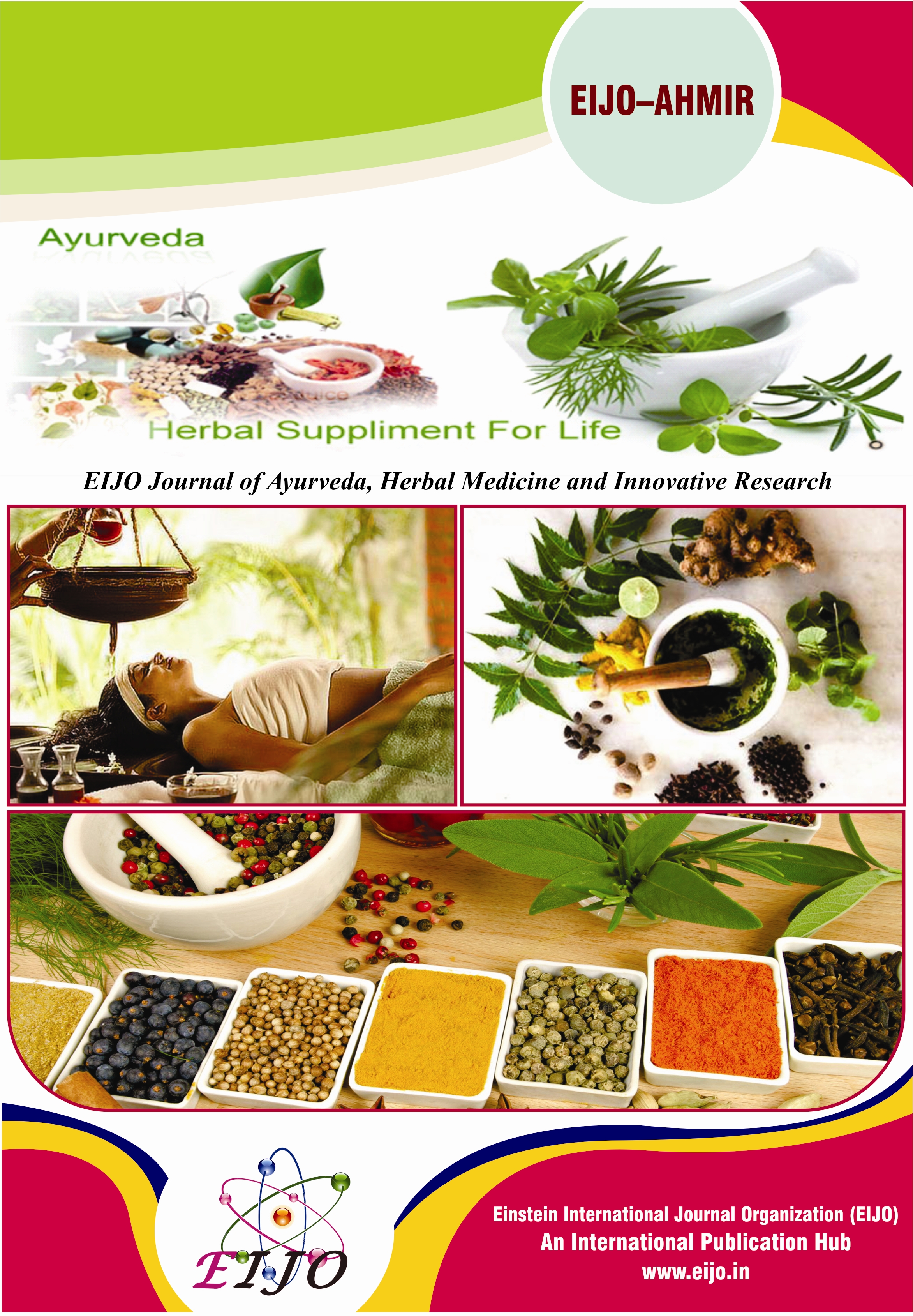JOURNALS || EIJO Journal of Ayurveda, Herbal Medicine and Innovative Research (EIJO – AHMIR) [ ISSN : 2456 - 530X ]
Abstract
A condition in which individual are at greater risk of progressing to type 2 DM & have an increased risk of cardiovascular diseases is called as prediabetes, if neglected converted to type 2 DM in long term. The worldwide prevlance of DM has risen over the past 2 decades, from an estimated 30 million cases in 1985 to 382million in 2013. The international diabetes federation projects that 592 million individuals will suffer from diabetes by the year 2035. Depending on the etiology of the DM, factors contributing to hyperglycemia include decreased insulin secretion, decreased glucose utilization and increased glucose production. DM is the leading cause of end stage renal disease, non traumatic lower extremity amputations, adult blindness and predisposing factor to cardiovascular diseases. With increasing incidents worldwide, DM will be leading cause of morbidity & mortality in future. As stated in our classics sedentary lifestyle, frequent intake of some dietary products like curds, soup of flesh of domestic, aquatic and marshy land animals, milk preparations, freshly harvested foodgrains, freshly prepared alcoholic drinks, jaggery and its products are the causative factors of Prameha. In due course of time all types of Prameha even after proper or improper treatment gets converted to Madhumeha. Since these factors are responsible for manifestation of Poorvaroopa of Madhumeha (prediabetic symptoms) a survey based study has been conducted.
Keywords: Madhumeha, Diet, Prediabetes, Type 2 DM
[1]. International Textbook of Diabetes Mellitus, 4th edition, Edited by Ralph A. DeFronzo, E Ferrannini vol – 1, Page – 550.Zimmet, & K. George Alberti, 2015 John Wiley & Sons, Ltd.
[2]. Harrison’s principles of internal medicine (vol 2, p – 2401) 19th edition.
[3]. Tabak G, Herder C, Rathmann W, et al.:Prediabetes : a high risk state of diabetes development. Lancet 2012; 379:2279 –2290.
[4]. Agnivesha, Charakasamhita, Nidana Sthana 4/47. edited by Vaidya Yadavji Trikamji Acharya. Varanasi: Chaukhambha Surbharati Prakashan; 2008.
[5]. Harrison’s principles of internal medicine (vol 2, p-2406) 19th edition.
[6]. Agnivesha, Charakasamhita, Nidanas thana 6/7. edited by Vaidya Yadavji Trikamji Acharya. Varanasi: Chaukhambha Surbharati Prakashan; 2008.
[7]. Harrison’s principles of internal medicine (vol 2, p-2400) 19th edition,
[8]. WHO Diabetes guideline Development committee: Definition & Diagnosis of Diabetes Mellitus and Intermediate hyperglycemia. Geneva: WHO, 2006. WHO: Use of glycated hemoglobin (HbA1C) in the diagnosis of DM. Abbreviated report of a WHO consultation. Geneva; WHO 2011.



